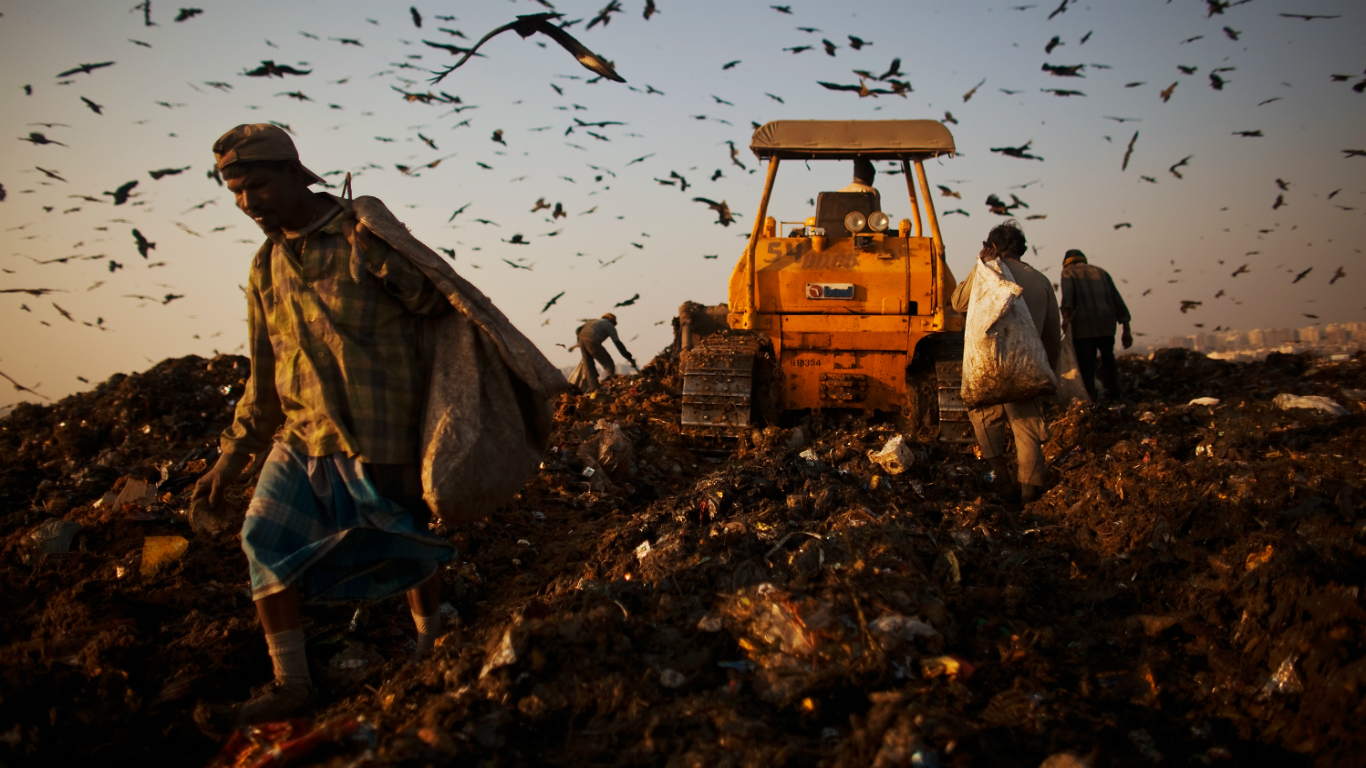“Most polluted capital city” isn’t exactly an in-demand title. According to a study by Greenpeace and Swiss-based IQ AirVisual, New Delhi, India’s capital, seems to have a lock on that dubious distinction, thanks in part to landmarks such as the Ghazipur landfill, on the city’s eastern edge. At 213 feet and rising, by next year it is expected to outstrip one of the nation’s most storied monuments, the 239-foot Taj Mahal, in Agra
Declared a health risk for people living within three miles, this towering toxic Ghazipur landmark is hazardous on multiple levels. Methane-fueled fires can take days to extinguish. Two people were killed on the site in 2018, when part of the fill collapsed during heavy rains. Toxic ooze pollutes ground water and leaches into a local canal. There’s an abundance of air pollution, including from a nearby recycling plant emitting noxious smoke. And, of course, there’s the smell, emanating from the more than 2,000 metric tons of garbage dumped at Ghazipur daily.
The landfill opened in 1984, and reached capacity by 2002. However, with no alternative site designated the dumping continues, and the elevation climbs by about 33 feet annually. India’s top court has recommended installing red signal lights atop Ghazipur to alert pilots to the rising mass.
It’s going to take some highly creative thinking and action to resolve this problem anytime soon. Just last week we reported on the burgeoning generation of waste worldwide, which, according to some estimates, is expected to increase by as much as 70% by 2050. Several countries are responsible for much of that trash. These are the world’s biggest producers of waste.
In addition to its status as the world’s most polluted capital, New Delhi reached No. 7 on our ranking of the world’s 28 most polluted cities.
